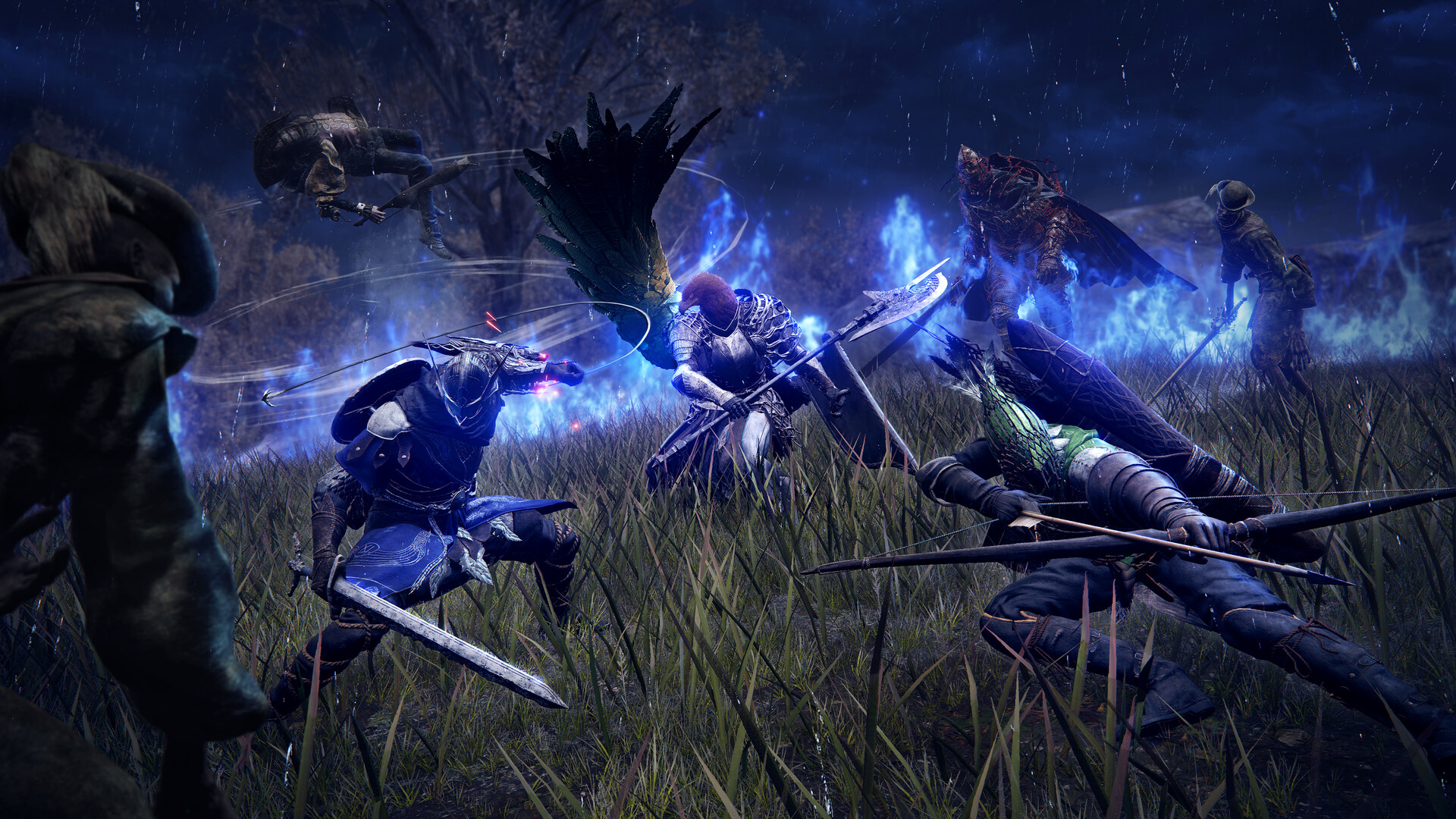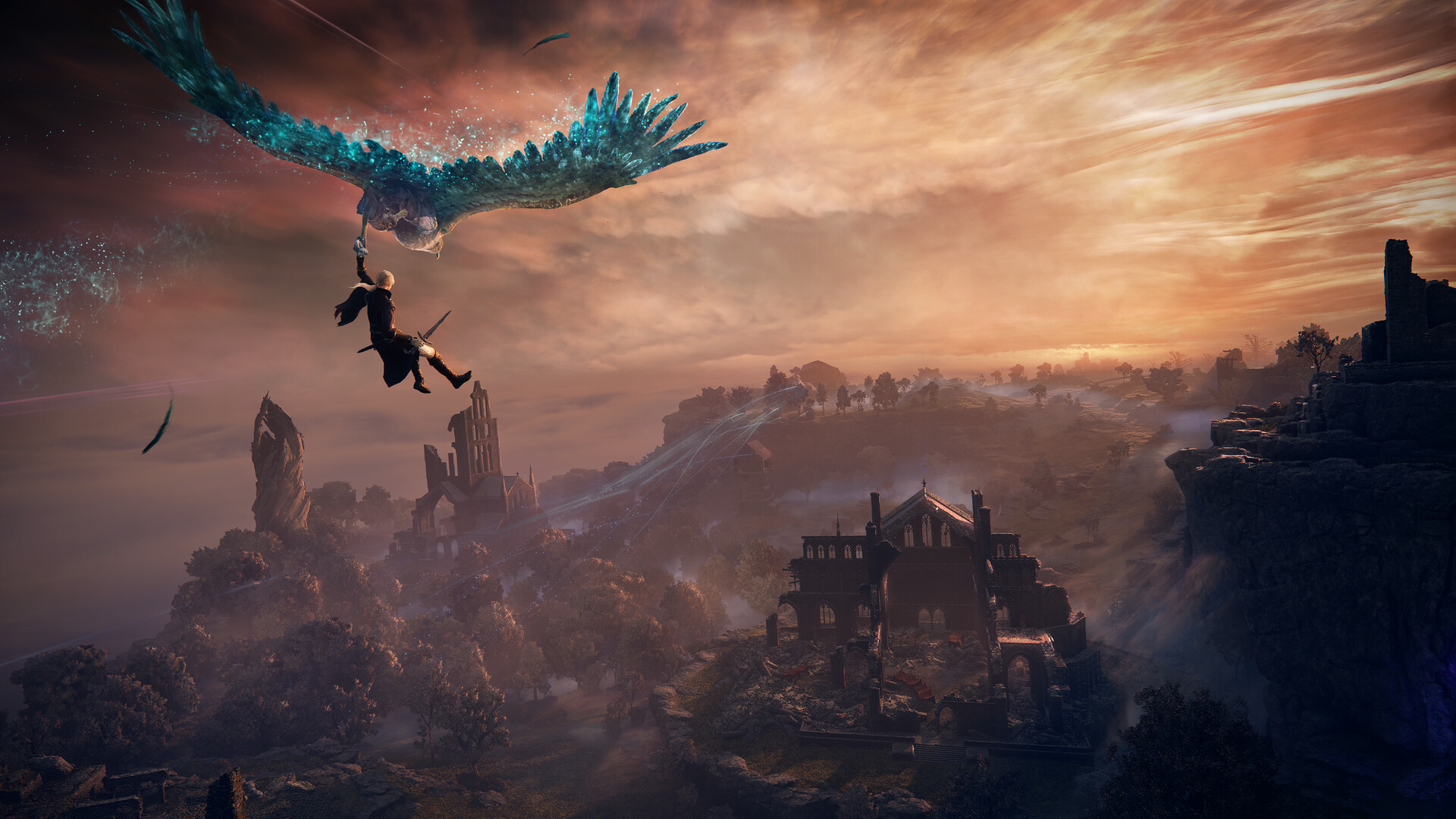
Despite numerous failures and studio closures, the pursuit of the perfect live service title continues in the games industry. Perhaps the most notable new strategy is emulating the $40 model of Helldivers 2 and delving more into co-op as seen with the upcoming FBC: Firebreak. However, despite similar pricing, FromSoftware’s Elden Ring Nightreign doesn’t fall into the same category. In some ways, it could even be considered a direct response to what hardcore fans of Elden Ring have been doing for a while.
A seamless co-op experience without having to summon the other person(s)? A randomizer-style gameplay loop whereby enemy placements, bosses, and loot drops can change, albeit without the hilariousness of seeing a late-game foe in an early area? Check and check. And this time, even console players can join in, with no mods required.
But Elden Ring Nightreign is more than that, not unlike how Elden Ring went beyond the definition of an open-world action RPG. At heart, it’s about delivering a Souls-like experience and all the emotions it brings, from crushing defeat to that urge for “one more time,” which can spiral into hours and hours of frustration. And despite some annoyances and technical issues (thankfully unrelated to performance), it’s a compelling co-op adventure with much to discover and plenty of ways to die.
"Memory Fragments and Remembrances offer some much-needed context and interactions between the Nightfarers – like the bond between the Recluse and the Guardian – because walking around and interacting with them normally doesn’t yield much by way of memorable dialogue or details."
The story, such as it is, unfolds in typical FromSoft fashion. After suffering death and awakening in the Shrouded Roundtable Hold, you’re officially part of the Nightfarers, a group of individuals who seek to slay the Nightlord. It’s a straightforward premise laden with multiple questions. Who is the Nightlord? Why is the Night encroaching so deeply on the world, laying waste to everything with its rains? While the major guiding motive feels less grandeur than Elden Ring, it’s still laden with compelling mysteries to solve.
Then you have the Nightfarers, each with their own backstories that eventually brought them to the Roundtable Hold, outlined in Memory Fragments obtained by progressing through the game. Collect enough, and these eventually give way to Remembrances, narrative sections where you obtain personal objectives (more on that later). These offer some much-needed context and interactions between the Nightfarers – like the bond between the Recluse and the Guardian – because walking around and interacting with them normally doesn’t yield much by way of memorable dialogue or details.
Regardless of whether it’s the Nightfarers’ journeys or the main quest, progression is dependent on slaying the Nightlords. A typical run consists of two days and two nights, with the third day culminating in a fight with the Nightlord. After pairing with other players – either through matchmaking or through the game’s password system – you’ll fly into Limveld via Spectral Hawk and scrounge up whatever’s available.
Each run begins at level 1, and you’re capable of taking out the smaller camps and roaming enemies to earn Runes and level up. You could attempt to fight some of the tougher roaming mini-bosses or assail the castle in the center if you favor a quick death. However, time is of the essence due to the Night’s Tide, which shrinks the map’s playable area.
The gameplay loop is thus similar to a battle royale title sans enemy players. Gather enough resources and weapons of varying rarities to ultimately face the boss awaiting at the end of the night. Defeat that boss, and the cycle begins anew for Day 2 before you’re whisked away to another realm and must fight the Nightlord.
"From a rogue-like perspective, Nightreign imbues enough into Limveld to make each run feel unique. Beyond different enemies, mini-bosses and bosses between runs, you may run into random events, like a curse that reduces your max health before reaching the Nightlord, or an Elite that saps away your levels until killed."
Where Nightreign feels fundamentally different is in the decision-making and build-crafting elements. Taking the time to slay smaller enemies and level up is important by the stat increases, but so is assailing forts and camps to take on some of the tougher Elites for more Runes, passive benefits (like increased HP, FP, flask healing, etc.), and better weapons. You might also want to save some Runes for the vendor, who offers Wondrous Physick flasks with various effects, consumables, upgrade materials, and weapons. Evergaols offer a hefty burst of Runes for quicker leveling, but maybe you’d be better off saving that Stonesword Key for Day 2 where the rewards are better.
You can’t do everything, and while an additional flask charge or upgrade material to take your Uncommon to Rare is vital, accounting for the Night’s Tide is also important. Splitting off from your team can seem like a decent idea to cover more ground, but good luck tackling those roaming mini-bosses on your lonesome, simply due to the sheer amount of time required to burn through their health. Death also works differently – when fatally wounded, you enter a downed state, and allies can deal damage to revive you. If you die, you lose a level and your Runes, which is all the more problematic if it happens to be in a zone swallowed up by the Night’s Tide.
A lot of Limveld will feel very familiar, especially if you’ve run around Limgrave for extended periods. That one mine with workers wielding powerful drills; the one stretch of road overlooked by two cliffs that a Troll leapt down from (sans the Troll); Liurnia of the Lakes – the deja vu is fairly strong. Thanks to the enhanced movement, allowing you to sprint quicker, clamber up surfaces (which can be a bit finicky in some places) and even leverage Spirit Streams, you’re encouraged to think on a more vertical basis. The map doesn’t needlessly complicate things, but the favoring of flow and faster pacing makes me miss the environmental story-telling of Elden Ring.
From a rogue-like perspective, Nightreign imbues enough into Limveld to make each run feel unique. Beyond different enemies, mini-bosses and bosses between runs, you may run into random events, like a curse that reduces your max health before reaching the Nightlord, or an Elite that saps away your levels until killed. The Fell Omen may also drop in and relentlessly pursue like the world’s biggest hater, never letting up and giving you a debuff as a parting gift if you die. Even AI-controlled Nightfarers can drop in to make life miserable just because.
The Shifting Earth modifier is also intriguing because it feeds into the risk vs. reward nature of Nightreign. It effectively transforms a portion of the map into a new location, like the Crater with its excessive lava or the Mountaintop with its frigid cold. Even if it’s Runes, the rewards are worthwhile enough to risk, but whether you’re strong enough or have enough time can add to the thrill.
Which brings us to the builds. The Nightfarers each slot into a specific role – the Ironeye is your ranged attacker. The Recluse is the spellcaster, the Wylder your jack-of-all-trades, master-of-none, and so on. Then you have weirder options like the Executor, who enters a special stance that can parry attacks, though best to practice because the Sekiro experience doesn’t quite seamlessly transfer. The Revenant can summon three Spirit Ashes of varying sizes and functions to fight alongside and even turn fallen enemies into temporary Spirit allies.
And while some weapons suit them better than others, there are no loadout restrictions outside of hitting the required level. You could run around as the Revenant, fighting alongside your summons with a Greatsword that unleashes bursts of seeking Madness projectiles, backing off to heal your party with an Incantation as required. Your version of the Recluse could focus exclusively on spellcasting or weave in some melee and ranged weaponry.
It’s very liberating, especially when accounting for the passive effects of different weapons, the sheer variety of the arsenal or the Relics, which provide passive benefits like skill cooldown reduction and even unique skills on top of reinforcing specific playstyles. The latter does provide some restrictions based on the equipped Ritual Rite, but finding an ideal combination of effects before heading in is part of the build-crafting fun. Couple this with the responsive combat that is FromSoftware’s bread and butter, and you have a satisfying gameplay loop that makes you want to try again and again, even if it ultimately fails.
Working together, especially against the Nightlords, is key. Some of the bosses, including the more familiar faces, can be enjoyable and provide some heart-stopping moments, but the Nightlords are the stars of the show. The first, Gladius, may seem fairly straightforward, but others, like Libra, are much more complex and challenging. Caligo, the ice dragon teased in key art, is Monster Hunter-esque in its scope and scale and feels incredible to battle. The conditions that you must adhere to, lest the fights become much more difficult than they need to be, are also great.
Though Nightreign is a co-op-centric experience, you can play it solo. I wouldn’t recommend it. On top of being much more difficult and seemingly not scaling for one player, it just doesn’t offer the same sense of enjoyment as playing with others, to say nothing of Elden Ring offering a superior single-player experience. This further feeds into one of my bigger issues with the personal objectives obtained from Remembrances.
Only one can be active during a run. I wasn’t able to matchmake with others to see how that would pan out, though I can only imagine that each player having a separate objective could cause issues. Going in solo seems like the right call, but then you’re at the mercy of your drop zone. If it’s not close, then the race against the Night’s Tide becomes a source of frustration, especially if you don’t take the chance to level up or find a better weapon. Quit to the main menu, load back in and try again, which just isn’t fun.
The matchmaking interface also doesn’t fill me with enthusiasm. After slaying the first Nightlord, you can select multiple to queue up for, which is great. But what happens to matchmaking times when you’re going by the remaining ones left to slay? It should be fine at launch, but what about months down the line when there are fewer players? I would have much preferred a system akin to Monster Hunter, with different parameters and lobbies to search for. You can set passwords and matchmake for that accordingly – one nice touch is being able to pair with a friend with the same password and have a random fill the third slot. However, they’re far from a worthy substitute for a proper lobby system.
Then there are the technical issues. Outside of one or two instances of frame drops, I didn’t face any performance issues, and this is at 1440p resolution on High settings. There were some instances of latency, but again, nothing too serious, though your mileage may vary, especially when way more players are logging in at launch. It’s the crashing that really got to me, where the game would freeze up before hurtling back to desktop. Sometimes, I could rejoin the session in question, though I would lose a level in the process. Other times, I couldn’t and good luck if you’re playing solo because that run is effectively lost to the ether.
Nightreign is obviously the same as its predecessor when it comes to visual fidelity, though there are some unique spectacles to behold. As such, the art direction, character designs, and animation work remains as impeccable as ever. The music is also suitably epic, regardless of which Nightlord you face, and immaculately sets the tone for each fight, be it a serene tune that seems a little too suited to lulling you to sleep or an appropriately gladiatorial theme.
If you’re a fan of playing Elden Ring alongside friends, then Nightreign is a no-brainer. It’s not an odyssey so much as a collection of expeditions, each success building on top of the other, but the combat, traversal, build-crafting, risk vs. reward mechanics and rogue-lite elements may it worth replaying. Those seeking the next big FromSoftware single-player experience probably won’t warm up to it all that much, even if there is plenty of intrigue to resolve.
Beyond improving stability, implementing a better lobby system, and somehow fixing the annoyances of personal objectives, I’m keen to see the team build on Nightreign further, and not just with new Nightfarers and bosses. New world events, raids, Shifting Earth modifiers – the list goes on. While it’s difficult to predict where it will be in a year, Elden Ring Nightreign is an enjoyable co-op experience that’s worth diving into.
This game was reviewed on PC.
Excellent combat, just like Elden Ring, with extensive freedom for builds. Each Nightfarer is unique enough without constricting your options for weapons and spells. Limveld feels unique enough between runs with its random events and Shifting Earth modifiers while balancing risk vs. reward. Nightlords present hefty challenges and in-depth mechanics. Solid performance all-around, backed by a great soundtrack.
Crashes, and despite the option to rejoin a session, you lose a level and Runes. Lacks a proper lobby system and the password-focused approach feels archaic at this point. Solo play is much less enjoyable and far tougher, which negatively impacts the personal objectives from Remembrances. Nightfarers don't have much to say at the Shrouded Roundtable Hold, and all environmental story-telling has been stripped from Limveld.


















